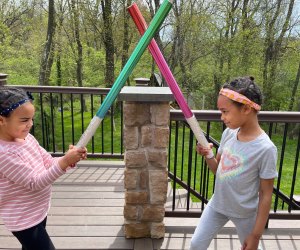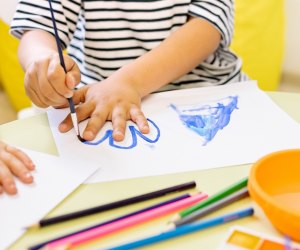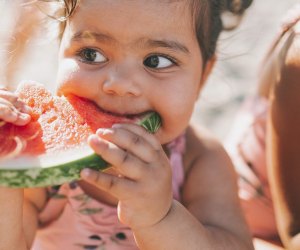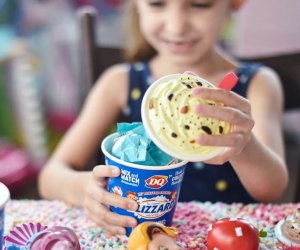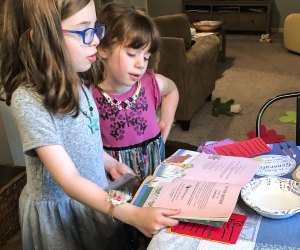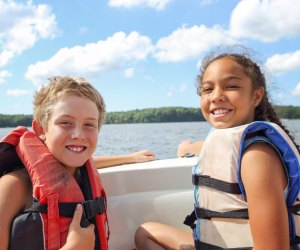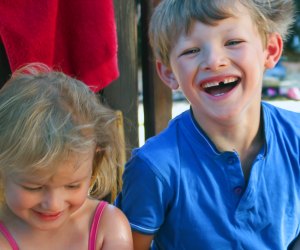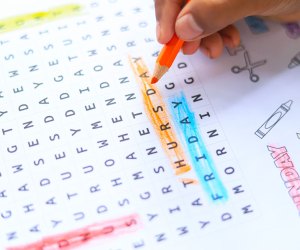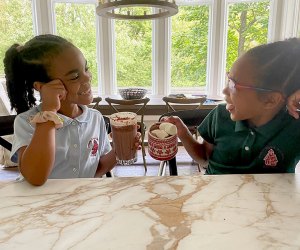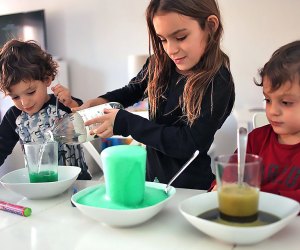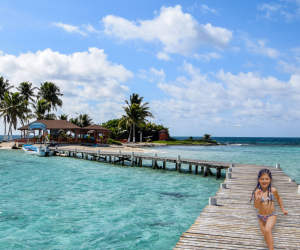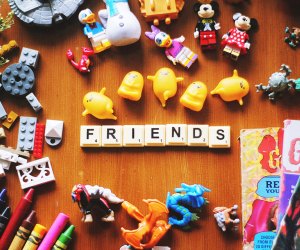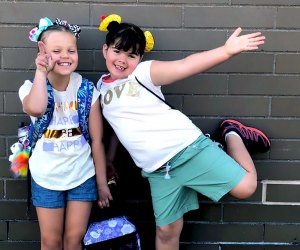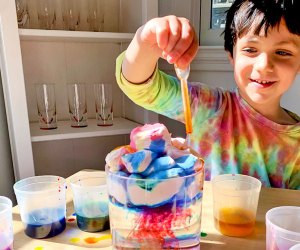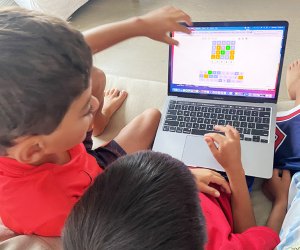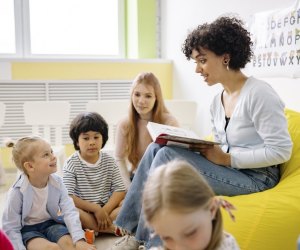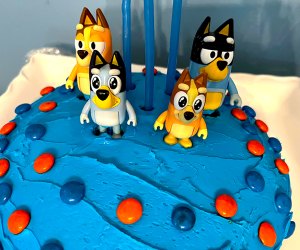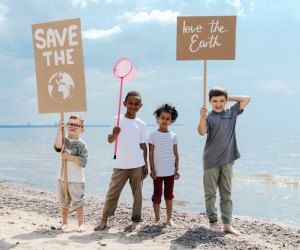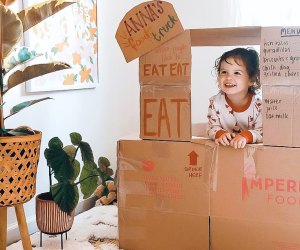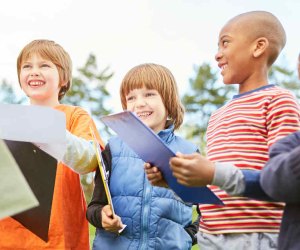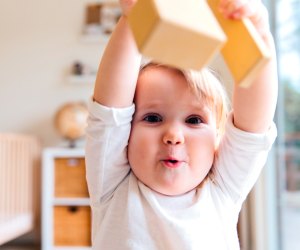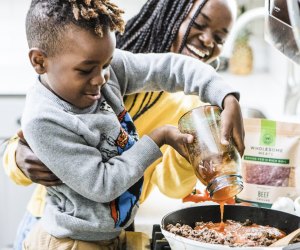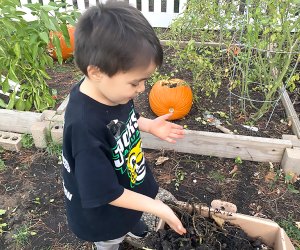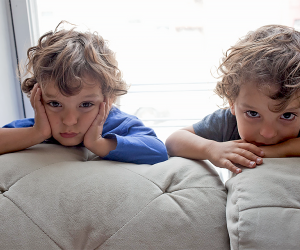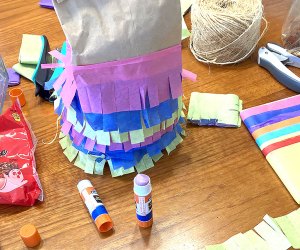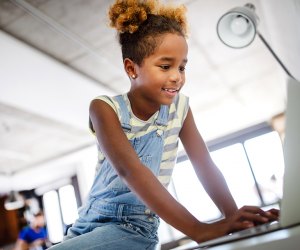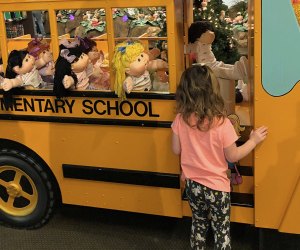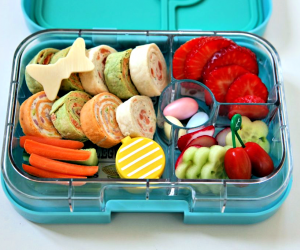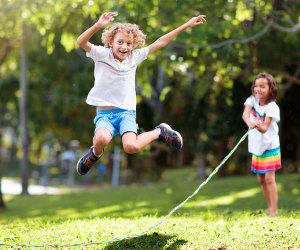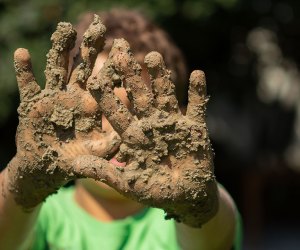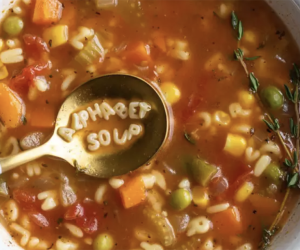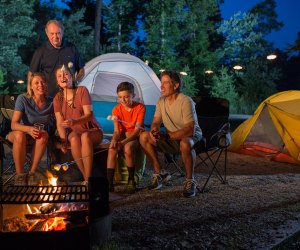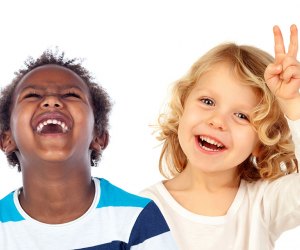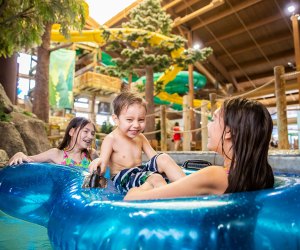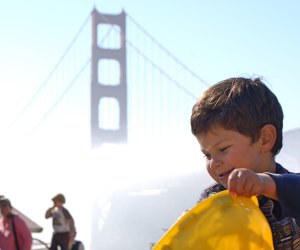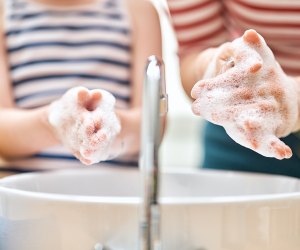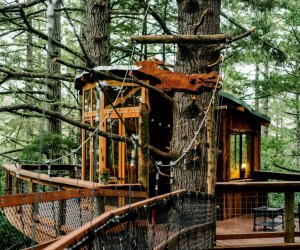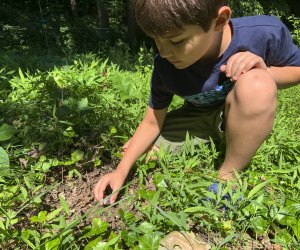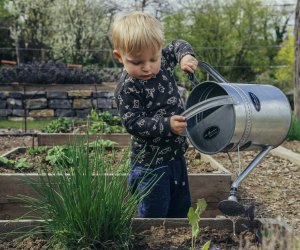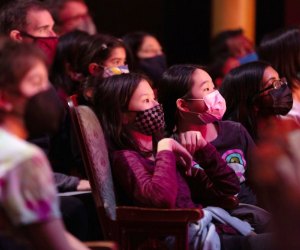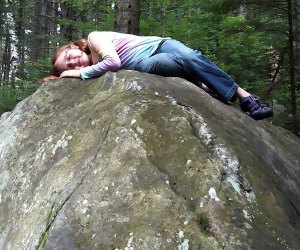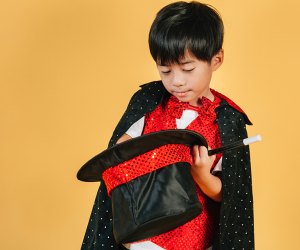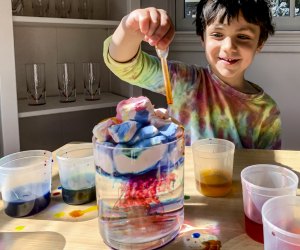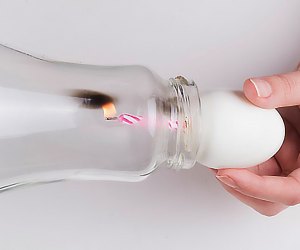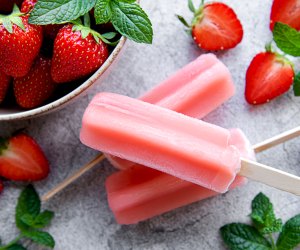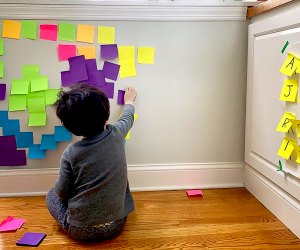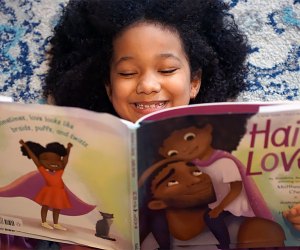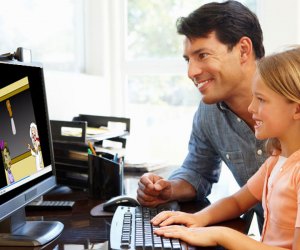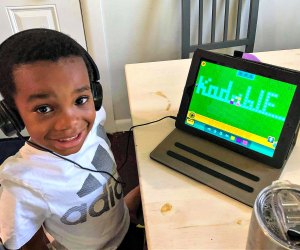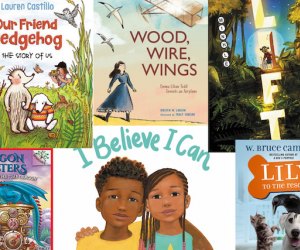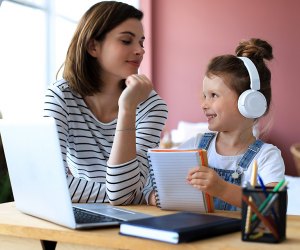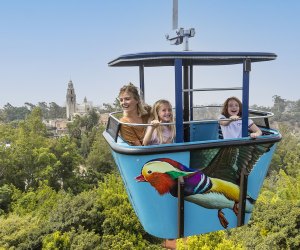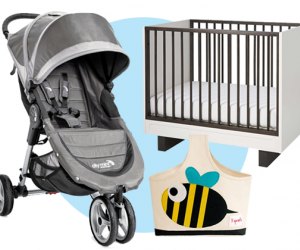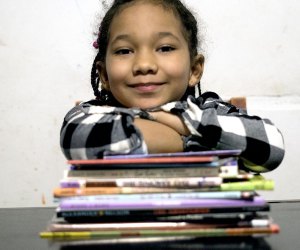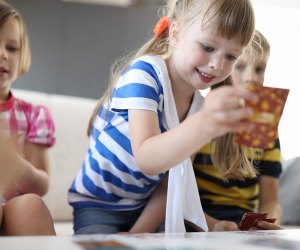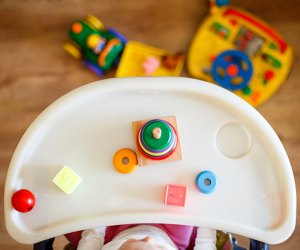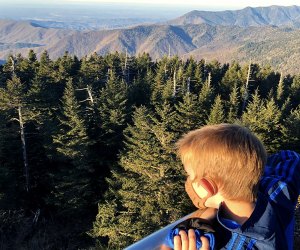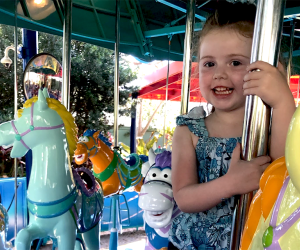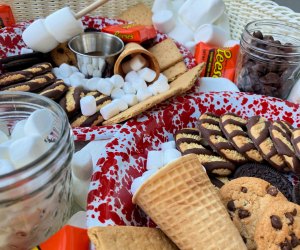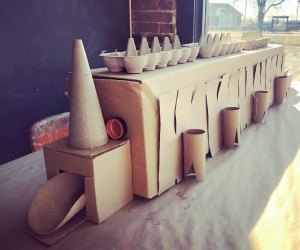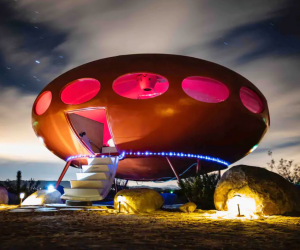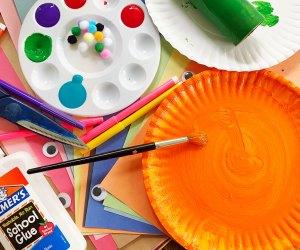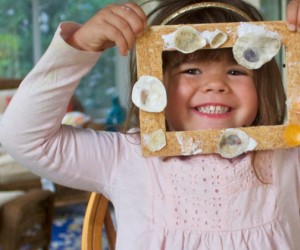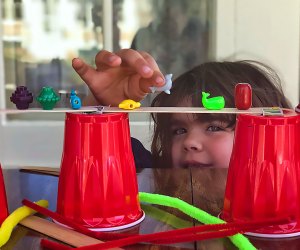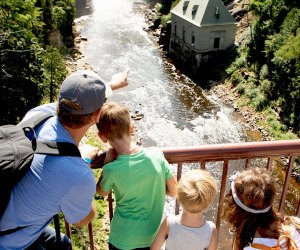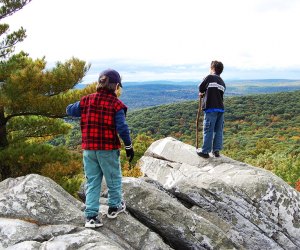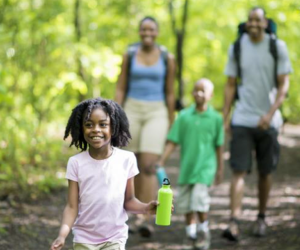50 Environmental Activities Kids Can Do at Home
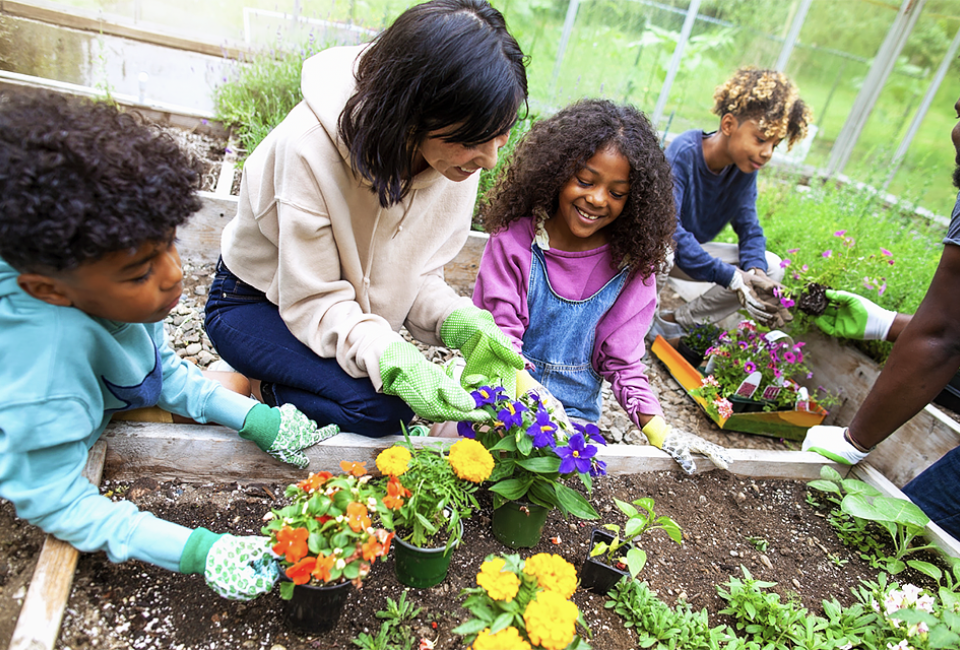
Climate change is going to continue to dominate conversations as our kids grow up. It can be scary and overwhelming to think about how the world will change due to the environmental crisis. Taking action can really help kids feel more in control and like a part of the environment around them.
From recycled crafts to eco-friendly swaps and more, we’ve gathered fun, educational, and impactful environmental activities that you can do at home.
For more green news and activities, check out our Earth Kids Guide to Green Activities for the Planet, and subscribe to our free Earth Kids newsletter to never miss an article.
OUR LATEST VIDEOS
Recycled Crafts for Kids
1. Turn newspapers, magazines, and even damaged books into collages
This eco-friendly activity is also budget-friendly, as the only supplies you’ll need are glue and scissors. You can even use collages to make homemade Valentine's cards or holiday cards!
2. Teach your kids to sew while repurposing old clothes
Sewing is such a vital skill for kids to have, and there are tons of beginner projects out there featuring upcycled materials. This list from Thimbles Quilt has a lot of really cool options. If your kid really enjoys sewing, check out our guide to the best sewing machines and kits for kids.
3. Make t-shirt yarn
Repurposing old T-shirts couldn’t be any easier! T-shirt yarn is really fun to make and can be used for so many crafts, from knitting to these recycled friendship bracelets.
4. Unravel old sweaters and knit something new
Knitting is a great hobby for kids (hello, fine motor skills!) but yarn can get really expensive. Plus, acrylic yarn sheds microplastics, making it less than ideal for sustainability. Luckily, it’s pretty easy to unravel old sweaters into balls and balls of yarn. Just look for sweaters that don’t have seams on the torso, as these may be made of shorter pieces of yarn. You can even go to the thrift store just to find sweaters to unravel!
5. Make your own reusable beeswax wraps
If you’re trying to reduce your single-use plastic consumption, these DIY adorable reusable wraps are a great craft for you! Your kid can choose a fabric they like and help with the process. Just be careful with younger kids, as hot wax is involved.
6. Learn to mend holes in your clothes
Mending is a lifelong skill, and it’s one you can start teaching your kids right now. From iron-on patches to learning some simple sewing stitches, kids will love customizing their own clothes while reducing fabric waste. Use this guide to teaching kids mending to get started.
7. Try your hand at darning
Okay, it might seem a little old-fashioned but we can totally see darning coming back in style this year. This is probably a better activity for older kids, as it requires a good amount of precision and patience. But the satisfaction of saving a hole-ridden pair of socks from the landfill is too good to pass up. This super informative post about how to darn is a great place to start.
8. Make shrink plastic crafts from food containers
If your kids love Shrinky Dinks, you’ll be excited to hear that you can make shrink plastic crafts out of items that are probably already in your recycling bin. Saving money and the planet, all at once!
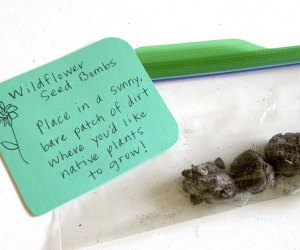
When you make wildflower seed bombs, you can gift them or just plant them! Photo by Katie Sivinski
9. Make local wildflower seed bombs
Native wildflowers are beautiful and incredibly important for pollinators. These DIY seed bombs are the perfect gift for Valentine’s Day, Earth Day, Mother's Day, or just because. Making them is super fun too!
10. Make seed paper
DIY seed paper is an easy way to get your kids excited about growing plants. You can use any seeds you want, from herbs to veggies and more! We love writing little notes on these and giving them out as presents.
11. Reuse your cardboard boxes
Cardboard can really pile up in the recycling bin, especially after the holidays. Give it a second life before it gets recycled with these awesome cardboard crafts.
12. Make a DIY bird feeder
There are tons of amazing DIY birdfeeders out there, but we like this super easy bird treat ornament. As an added bonus, your kids can learn about all the birds they see visiting their ornament.
13. Build a house for local bees
While honey bees get lots of love, they aren’t actually native to North America. There are lots of other native bee species that do the bulk of our pollinating, and they need help too! This adorable DIY mason bee house helps pollinators and may get your kid excited about saving the (native) bees!
14. Make egg-carton flowers or try another recycled craft for kids
There are honestly too many adorable recycled crafts to count! We especially like these easy egg-carton flowers for little ones.
Environmental STEAM Activities for Kids
15. Calculate your carbon footprint
Work together as a family to calculate your carbon footprint. You might be surprised about how much carbon dioxide is produced by things like eating meat and taking planes!
16. Calculate your water use
Use the Water Footprint Calculator to figure out how much water your household uses! Then discuss ways to reduce water consumption, like not watering the lawn and taking showers instead of baths.
17. Get involved with citizen science
Getting involved in citizen science projects is a really fun way to connect with actual environmental research. You can participate in national projects like SquirrelMapper, or connect with a local organization. PBS Kids has an amazing citizen science database you can browse to find the perfect opportunity.
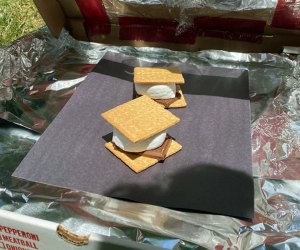
This solar oven science experiment offers one tasty reward: ooey, gooey s'mores. Photo by Ally Noel
18. Build a solar oven
This STEM project will totally get your kid excited about science and s’mores! With just a few simple materials, you can build a solar oven in your own backyard and use the energy from the sun to cook.
19. Make your own recycled paper
If you’ve got lots of scrap paper lying around, try giving it a new life and turning it into your very own recycled paper. This super fun project can get a little messy in the best way, and may inspire young artists to turn old paper into new masterpieces.
20. Look at nature under a microscope
If you’ve got a kid's microscope on hand, or are thinking about getting one for an upcoming birthday, take a look at the tiny structures all around you. You might be surprised at what you see in water, plants, and even snowflakes!
21. Press flowers and leaves
Pressed flowers are fun and easy to make, and they are also an excellent opportunity for some at-home STEAM education.
22. Try plein air painting with kids
Plein air painting is just a fancy way to say painting outside. Did you know that kids who feel more connected to nature are more likely to take environmental action? And what better way to get connected to nature than to paint your surroundings!

Sila and the Land teaches about a shared respect for the earth and protecting it for future generations.
Learn More About the Environment
23. Listen to a podcast about the environment
If you like listening to podcasts together, try one of these environmental podcasts for kids! You might even find your new favorite pod.
24. Explore indigenous teachings on the environment
Indigenous wisdom is an important perspective in environmental work, and these short videos for kids are an amazing way to introduce your kid to alternate ways of thinking about the planet. Or you can opt for a picture book like Sila and the Land!
25. Read a nature-inspired book
There are so many beautiful books about nature that can help kids feel more connected with the natural world around them. We love the variety on this list of nature books for kids.
26. Learn about all the different types of pollinators (it’s not just bees and butterflies!)
Pollinators are super important to our ecosystems. But, did you know that there are many species that act as pollinators? From flies to bats, learn all about pollinators with this Climate Kids learning guide.
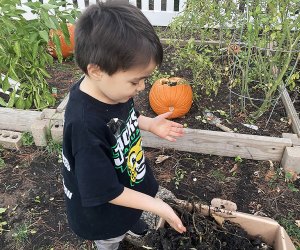
There are all kinds of ways of composting, from a garden bin to a kitchen container. Photo by Maureen Wilkey
Outdoor Activities for Environmentally Friendly Families
27. Start a food garden
Growing your own food isn’t just environmentally friendly, it’s also a great way to get kids interested in what’s growing around them. From a full-fledged backyard farm to a windowsill garden in your apartment, gardening with kids is super rewarding.
28. Start a pollinator garden
We need pollinators, and pollinators need food! Help them out while also having fun in the dirt by planting a pollinator garden in your backyard (or on your windowsill!)
29. Learn to compost
Composting is an amazing way to directly reduce how much junk you’re sending to the landfill. Check out our guide to composting for families to learn more about how you can make composting work for you.
30. Start a worm farm
You already know your kids are going to be excited about the idea of a worm farm! If you’re a gardener looking to take things to the next level while also reducing food waste, consider turning your compost bin into a worm farm!
31. Plant sprouts in your kitchen
We get it, gardening can feel pretty overwhelming. Maybe growing sprouts is more up your alley! Sprouts are a cheap and easy growing project, and you can do it all in a jar in your kitchen. Plus, your kids will be excited to watch the little green stalks shoot up (they might even consider eating them!)
32. Plan a nature-themed scavenger hunt
Connecting with nature is a great way to encourage environmental awareness in kids. We love doing nature-themed scavenger hunts in the great outdoors. Just make a list of items to find like pinecones, leaves, and even bugs, and step out your front door. For more ideas, check out our roundup of Outdoor Scavenger Hunt Ideas for Kids.
33. Learn about local foraging
Foraging is a great way to shift your perspective on the plants around you. Plus, it gives your kids the opportunity to actually eat what they find on the ground. We recommend taking a foraging walk with an expert, just to be safe.
34. Do some family birding
Even in cities, birds are always all around us. Get your kids excited about watching the birds fly, eat, and socialize. We love the resources offered by Audubon Kids!
35. Learn about the types of rock in your area
Rocks tell us a lot more than you might think about the world around us. The rocks around you might have been brought there by glaciers, or left behind by ancient oceans. Help your kids learn about science and connect with nature by identifying the rocks you find outside!
36. Go on a garbage walk
No, it’s not a walk that makes you feel like garbage. A garbage walk is just a walk where you pick up the trash you see as you go. Surprisingly, kids get really into this idea and it’s a nice way to make an impact in your community.
37. Plan a national parks trip
If you’re looking to experience the outdoors in a big way, consider planning a national parks trip. Our national parks family travel guide will help you have an amazing time in some of America’s most beautiful places
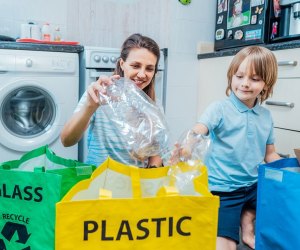
Almost all plastic bottles and food containers are recyclable. Make a game of sorting your recycling!
Kids Can Help Reduce Your Family’s Environmental Impact
38. Participate in no-mow May
Mowing your lawn can actually harm pollinators! When you mow, you cut down the flowers (like dandelions and clover) that pollinators need to survive the spring. Try skipping mowing for the month of May, or (even better) reducing mowing overall! Learn more about mowing here.
39. Sort your recycling!
Sometimes recycling feels like trying to decode some sort of riddle. What can be recycled and what can’t? Sit down with your kids and sort through everything in your bin using our recycling guide. It’s a fun activity and you might all learn a thing or two about recycling.
40. Have a "no lights" day
This fun little experiment will get your kids excited about energy conservation. Plan a “no lights” day at home, where you vow to turn the lights off for 24 hours to save electricity. While this isn’t a sustainable way to save power, it might get your family talking about energy waste in your home.
41. Learn about energy waste and reduce where you can
Speaking of energy waste, there are things that your family can do to reduce the amount of wasted energy you use. This guide from Environment America is a great place to start.
42. Try reducing water waste in your home
Water conservation is another good place to start if you’re trying to get your kids engaged in environmentalism. And yes, it can be fun too! Check out our guide to water conservation with kids to get started.
43. Do your holiday shopping at the thrift store/try to thrift flip
Instead of buying loads of new stuff every year, consider giving something used a second like. You can even try your hand at “thrift flipping,” where you revamp or DIY thrifted items. You can even use online consignment shops!
44. Carpool, take public transportation, or bike
Reducing your carbon footprint is a great way to make an impact, and driving less is a really significant choice you can make. From carpools to biking, there are lots of alternatives to driving. Have kids talk with their friends and figure out how to team up to make a difference together.
45. Donate items you no longer use
Clutter seems to appear around the house like magic. Work together as a family to collect items for donation, then give them to a local thrift store or organization.
46. Try meatless Mondays or other eco-friendly dietary swaps
One serving of meat consumes way more resources than a serving of plant protein. Try introducing meatless Mondays or a similar veggie-forward swap with these vegetarian recipes that will win over even the pickiest of eaters.
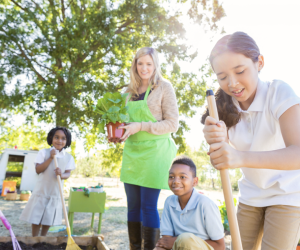
Raise little activists! Kids are never too young to get involved and make a difference!
Take Action in Your Community
47. Fundraise for environmental organizations
What’s cuter than a lemonade stand? A lemonade stand for a good cause! Work together with your kids to choose an environmental charity, plan a fundraiser, and then donate the proceeds.
48. Reach out to your elected representatives
Did you know that you don’t have to be of voting age to call your elected representatives? If there’s an issue your kids are passionate about (like investing in electric school buses!) you can help them call or write a letter to your local government official. Or take it all the way to the top!
49. Volunteer with your local parks department
If you have parks in your area, you have a parks department. Many parks departments have volunteering programs aimed specifically at kids and teens. From park clean-up days to more long-term positions, it’s a great way to get involved locally.
50. Help your kid start a Green Club at school
When taking action at home isn’t enough, maybe it’s time to bring eco-friendly thinking to school. Help your kid start a green club at their school, or encourage them to join existing environmental organizations.




